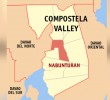One of the condemnable things during the December 9 bus bombing in Maramag, Bukidnon was that dozens of students from high school and college were not spared from the incident.
Sharing this outrage was Central Mindanao University, who lost five of its college students, including one who was bound to graduate summa cum laude in education.
Scores of students were also injured as the bus just took off after picking up passengers from the campus gate.
A day before this incident, another murder of a student took place in Mindanao State University of Marawi. 17 year old freshman Chris Masancay was shot at noon in the commercial center. This was the second murder in the university this year, and it took place in the same area.
Both campus communities and the public as well cry out for justice. Both incidents share the same thread that is impunity. How such groups proliferate, either by security lapses, slow justice system or corroboration with those in power, show that groups can attack without fear of punishment. With impunity, the life and the future of the youth can simply be put out by a squeeze of a gun or a trigger device.
Bombings have been happening in public places in Mindanao for the past years, yet authorities have been clueless on who is behind it. There are the bombings such as in the restaurant in a Cagayan de Oro Mall, as well as in Cotabato City and also here in Davao City.
Yet in all these incidents, authorities are still clueless in their investigations. As in the past, state security forces quickly point to terror groups are behind the bombings, but these allegations have been made without proof.
Goes to show there is the challenge for the state security forces to come up with competent action and investigation to assure the public of their safety.
While we are face with an invisible “enemy”, schoolchildren in the rural areas contend with a fear made visible.
This is according to the Save Our Schools (S.O.S.) Network which said indigenous schoolchildren in alternative literacy or formal schools set up by non-government organizations are greatly affected by military operations in their communities.
The S.O.S. showed that military operations have resulted to disruptions of classes, dramatized by the death of nine-year old Roque Antivo in Mabini, Compostela Valley in 2012 who was a student of an alternative school. There is also the case of the 67th Infantry Battalion disrupting the classes of STTLCI in Compostela Valley that has 115 students.
The group is dismayed that government especially the education department has been deaf to their appeals to implement international laws that forbid the presence of the military from school grounds. A couple of government directives such as Department of Defense Directive No. 25 and Department of Education Memorandum No. 221 justified the presence of the military in “civil-military” activities.
“The increasing presence of military in public and private schools for counter-insurgency operations, as well as their growing participation in ALS and other DepEd initiatives, demonstrates the militarization of our education system. Our educational institutions are being used for psychological warfare in the context of counter-insurgency operations,” a review by the S.O.S. said.
In both the urban and rural experiences, the state security forces are being zeroed in on how they can bring their own idea of “peace” that seems to do the opposite, as lives especially of the children and youth are far from experiencing peace and security.
Impunity is not an invisible enemy. But rather it is the presence of power that does not yield to the power of the majority. But if only the majority comes together, then there could be an action towards genuine peace, and our children would not bear to suffer from it.










